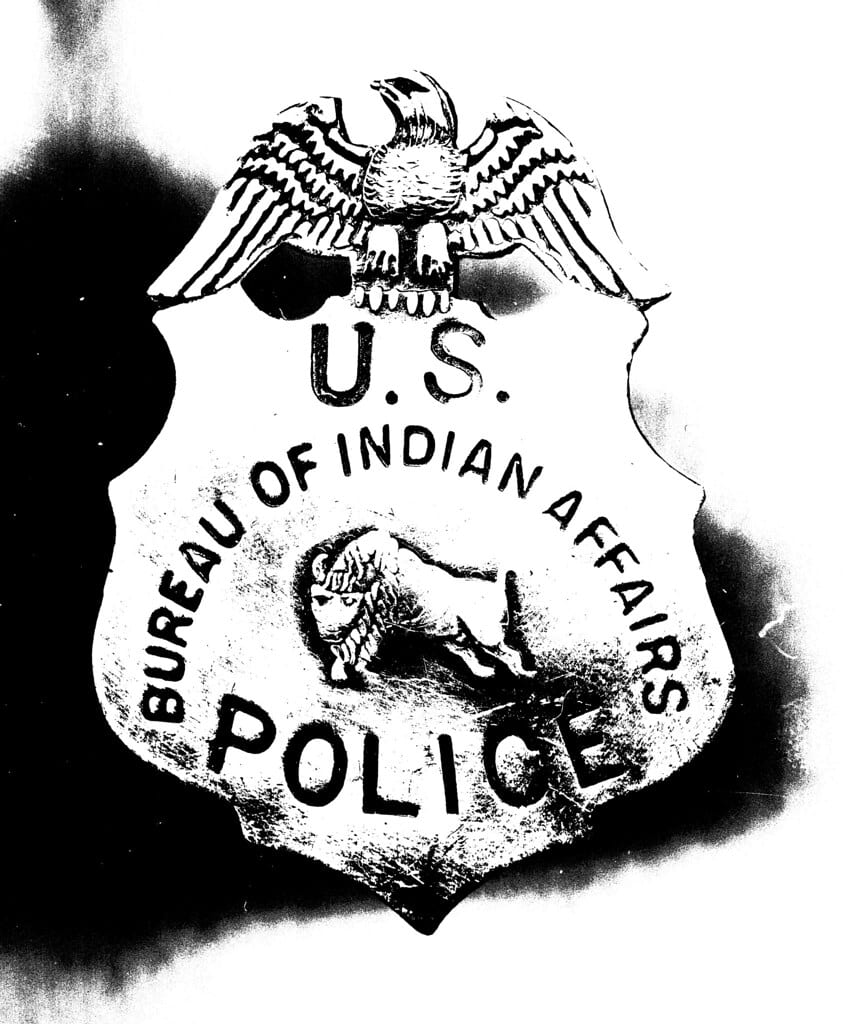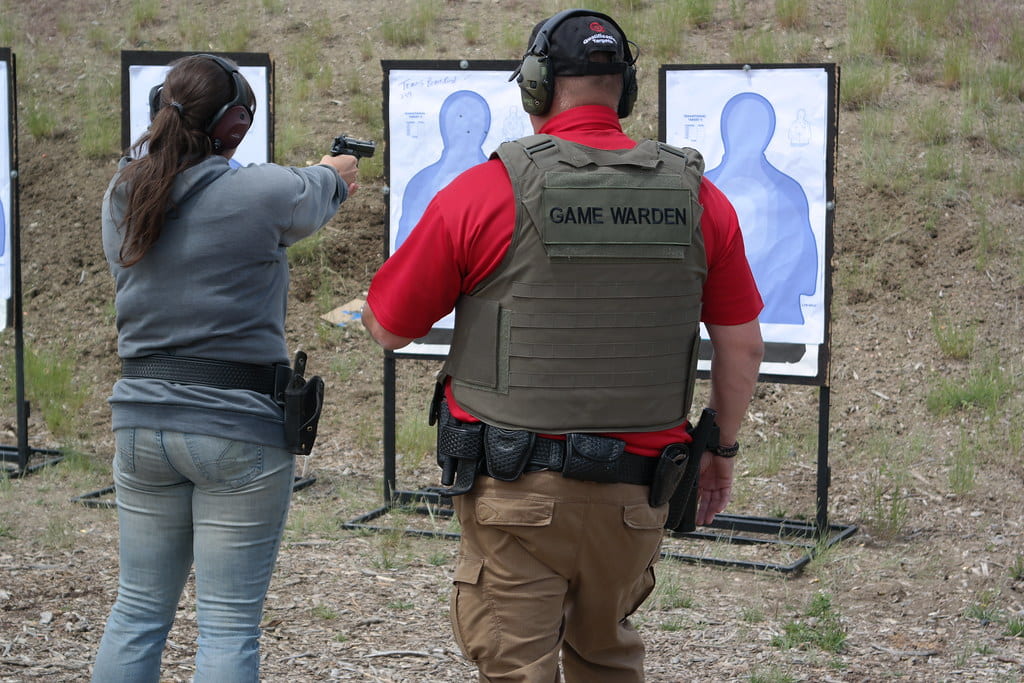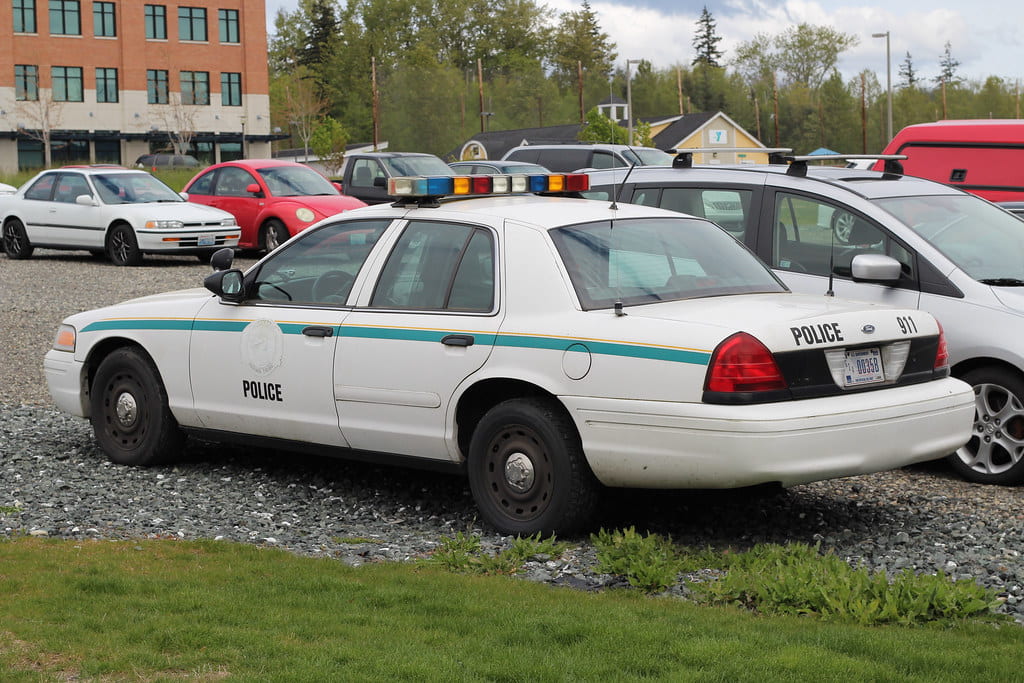by Eva Pechtl
For a better understanding of the information you will encounter in this blog, it may be valuable to read part one of my series on the Indigenous Justice System, “History of Limitations and Restorative Justice,” on the legal jurisdiction of Indigenous authorities and the traditional forms of justice in many Indigenous communities. In this blog, I will expand on the struggles of Indigenous communities due to insufficient federal funding. Multiple Indigenous tribes are suing the federal government for violating treaty obligations to provide adequate funding for law enforcement and justice services on reservations.

Tribes like the Oglala Sioux and the Northern Cheyenne are suing the Bureau of Indian Affairs (BIA), which operates 23 police agencies out of 258 official tribal law enforcement entities. The BIA’s Office of Justice Services is responsible for ensuring public safety and justice across Indigenous communities with a proposed 2024 budget of 641.8 million for Public Safety and Justice operations. Under section (900.33) of Public Law 93-638, proposals by agencies outside of the BIA must be reviewed by declination criteria under Subpart (E) and can be declined. Under section (900.31), tribes are entitled to appeal such decline of a proposal and can sue if they wish to challenge the decision.
The findings of U.S. Code Title 25 Section 3601 state that “tribal justice systems are inadequately funded, and the lack of adequate funding impairs their operation.” There are 234 tribally operated law enforcement agencies; however, the BIA allocates more funding to the minority of agencies that are operated internally. Indigenous communities deserve well-prepared protection from law enforcement, but they are currently faced with battles they cannot win because of this disparity in resources.
Agencies Bound to Crumble
In a Senate roundtable discussion on Public Safety in Native Communities, several Indigenous speakers spoke about problems surrounding law enforcement in their communities. Tribal police Chief Michael Ford from the Reno-Sparks Indian colony expressed the challenges of keeping tribal officers when external wages are more competitive. Chief Ford explained that after years of training, tribal officers consider better positions for themselves and their families, making it difficult to build trusting relationships with community members and to have experienced officers capable of addressing serious issues. Similarly, Alex Cleghorn, Senior Legal and Policy Director at the Alaska Native Justice Center, explains how the competitiveness of grant processes and the non-guarantee of funding makes it difficult to have continuity in services. This causes challenges for Tribal law enforcement programs and deprives them of a chance to grow consistently or make positive impacts. These are examples of issues generated due to the lack of funding for police services and its effects on failing to adequately support tribal police.

Executive Director of the National Indigenous Women’s Resource Center, Lucy Simpson, comments on the effects of the lack of trust in police in Indigenous communities. Strong negative perceptions of law enforcement are present in Indigenous communities following consistent delays in services or instances of abuse by officers. Police abusing their power mixed with low expectations of law enforcement cause both a lack of reporting and of prospective police officers. This weakens the legitimacy of tribal police departments and perpetuates cycles of crime in Indigenous communities. When crimes aren’t reported or followed up on, it’s difficult for tribal police to maintain statistical information that is needed to handle crime reliably. Insufficient resources over time do not only prevent tribal police from effectively responding, but they preserve cycles of criminal behavior and negative police relations.
Jeopardizing Indigenous Community Safety
In a podcast made this summer by Native America Calling, the President of the Fort Belknap community, Jeffrey Stiffarm, says, “The community knows when there is only one person on staff.” Stiffarm said that drug pushers would make prank calls about domestic violence incidents, knowingly distracting the officer toward a remote end of the reservation while they make a shipment. This is not only dangerous for the community but also for the officers, who often have no choice but to arrive at dangerous calls alone.

What Stiffarm found particularly frustrating was how the BIA funds departments that are not run by tribes at double or triple the amount. In Fort Belknap, the Chief of Police, criminal investigator, and four dispatchers are paid half the amount of BIA salaries for the same duties, and the tribal officers are paid 70%. Gary Lamere, a supervisory criminal investigator also from Fort Belknap, further exhibited this disparity when he recalled working for the BIA-run law enforcement on the Mescalero Apache Tribe in New Mexico, which had significantly more funds. He argues that with over $2 million for personnel alone, his patrol officers could be proactive, unlike in Fort Belknap, where the entire department has received $1.2 million for all services and is constantly fighting to catch up with crime.
In the Native America Calling podcast, criminal investigator John Grinsell from the Northern Cheyenne Reservation says that the BIA closed the local jail and moved it 50 miles away with the promise of offering rehabilitation programs. However, the programs never showed, and the Northern Cheyenne and Crow tribes are only allowed 50 beds each out of the 400 beds in the facility. When there is an overflow in the facilities, offenders are transported to Oklahoma, where, if they are released, they often must wait for the monthly transportation services to transfer them back to their community. There is generally high frustration among Indigenous communities about the extended periods it takes for law enforcement officers to respond, often reaching an hour and a half. Furthermore, tribal police often must follow up on crimes without proper compensation when the BIA’s operations fail to follow up. Recently, in the Northern Cheyenne community, arson of a local thrift store was never followed up on, according to Grinsell.
Constantly Running Behind
When asked in the podcast what he knows about any tribes that are adequately funded, Stiffarm notes tribes like the Crow, which use money from their natural resources to fund their own programs. However, most reservations have been stripped of natural resources like coal and oil, leaving them with minimized opportunities to raise funds for themselves. For centuries, Indigenous people have been stolen from, wrongfully, and not reimbursed fully enough to escape the poverty that ensues.
Geno LeValdo, a tribal council member in Fort Belknap, comments in the podcast that “no one cares about our communities as we do” and spoke to the BIA’s blatant rejection of pleas for funding. Frankly, the perception among Indigenous communities is that no one cares. A caller on the podcast from Fort Berthold in North Dakota argues that Indigenous people need representatives in Congress who are ready to listen to tribal members. Furthermore, they need Indigenous advocates who will advocate, not just fill a diversity spot.
President Biden has made tremendous changes, which he highlighted in his Proclamation on National Native American Heritage Month, including appointing many Indigenous people in his administration. His changes are positive, but they are not as impactful as Biden implied, according to Indigenous leaders still dealing with serious issues facing their communities. Biden’s budget for 2023 allocated $2.8 billion to the BIA, with $562.1 million designated for Public Safety and Justice operations. Indigenous leaders wonder about the specific destination of the funds, as they are well aware they are not being allocated towards their services.
Legislation deemed more highly supported by Indigenous people is the Parity for Tribal Law Enforcement Act, a bill introduced by Dan Newhouse in July 2023. It aims to address the barriers limiting tribal law enforcement by offering measurable steps to improve the hiring and retention of tribal officers. Again, Indigenous leaders are the ones who truly know what they need. Federal funding is a complicated process, but there is no reason to doubt and reject Indigenous calls for help.
